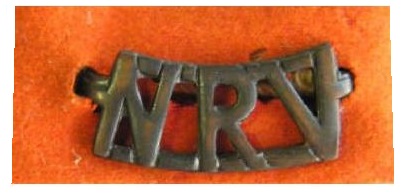Heidelberg Commando on:
[Wikipedia]
[Google]
[Amazon]
Heidelberg Commando was a


light infantry
Light infantry refers to certain types of lightly equipped infantry throughout history. They have a more mobile or fluid function than other types of infantry, such as heavy infantry or line infantry. Historically, light infantry often fought ...
regiment of the South African Army
The South African Army is the principal Army, land warfare force of South Africa, a part of the South African National Defence Force (SANDF), along with the South African Air Force, South African Navy and South African Military Health Servi ...
. It formed part of the South African Army Infantry Formation
The South African Army Infantry Formation supervises all infantry within the South African Army.
History Origins: Union Defence Force
South African Infantry originated as the ''Infantry Branch'' of the Union Defence Forces in 1913.
In 1915, ...
as well as the South African Territorial Reserve.
History
Origin
Heidelberg Commando was formed in 1851 and was one of the oldest SADF units. One of its most iconic commanders was General Christiaan de Wet who farmed near Heidelberg.Operations
With the Zuid Afrikaanse Republiek
During the Anglo Boer war this commando was known to have been commanded by a general at three different times. Heidelberg Commando served in the Natal Campaign and took part in the Battles of Modderspruit, Colenso, Platrand and Spioenkop. By January 1902 the unit was forced in the Free State and joined up with Frankfort Commando. The Commando was sent to assist the Free Staters at Paardeberg where General Piet Cronje and his laager was trapped. The Heidelbergers were then under the command of Commandant Cornelis Spruyt.With the UDF
By 1902 all Commando remnants were under British military control and disarmed. By 1912, however previous Commando members could join shooting associations. By 1940, such commandos were under control of the National Reserve of Volunteers. These commandos were formally reactivated by 1948.
=1922 Miners Strike
= At 05:00 on 12 March 1922, the Union Defence Force (UDF) attacked Benoni. The objectives was to defeat striking commandos at a steel factory and then move into the rest of the town. The Government forces commenced their attack at 11:00 and immediately came under heavy fire. The attack on the steel factory was supported by artillery fire from two positions, which contributed to the striker commandos being dislodged. The attack then continued along Main Reef Road. Commandant. P. Botha and a portion of the Standerton East Commando joined the fight at 16:00. The attack was called off at 17:00 in order to reorganize and consolidate positions before dark. Ammunition and arms arrived later that night and was distributed. The reinforcements consisted of the rest of the Standerton East Commando, the Blesbokspruit Commando (Standerton), the Heidelberg Commando, the Hoogveld Commando (Heidelberg), the Roodekoppe Commando (Standerton), and the Standerton West Commando. The attack continued on 13 March. The operation went according to plan and the besieged police and Permanent Force was relieved. An instruction was subsequently issued to arrest all male residents ofBenoni Benoni may refer to:
Places
* Benoni, Gauteng, a town in the Ekurhuleni Metropolitan Municipality, in the East Rand region of Gauteng province in South Africa
* Benoni, a barangay in Mahinog, Camiguin, Philippines
People
* Benoni (given name), a ...
.
With the SADF
During this era, the commando was mainly tasked with area force protection, search and cordones and stock theft control assistance to the local police.=Colours
= On 8 September 1990 the unit was awarded a new colours by the General Officer Commanding Witwatersrand, Major General W.G. Kritzinger. A new regimental badge was worn for the first tim. A castle surmounted by an eagle of the old South African republic to symbolize that at one time Heidelberg was the capital of the republic. The old badge of a "kranzitter" would no longer be used.With the SANDF
=Amalgamation
= Nigel Commando amalgamated with Heidelberg Commando on 1 April 1997.=Disbandment
= This unit, along with all other Commando units was disbanded after a decision by South African PresidentThabo Mbeki
Thabo Mvuyelwa Mbeki (; born 18 June 1942) is a South African politician who served as the 2nd democratic president of South Africa from 14 June 1999 to 24 September 2008, when he resigned at the request of his party, the African National Cong ...
to disband all Commando Units. The Commando system was phased out between 2003 and 2008 "because of the role it played in the apartheid era", according to the Minister of Safety and Security
The minister of police is the minister in the Cabinet of South Africa with political responsibility for the Department of Police, including the South African Police Service, the Independent Police Investigative Directorate, the Private Secu ...
Charles Nqakula
Charles Nqakula (born 13 September 1942) is a South African politician who served as Minister of Defence from September 2008 to 2009. He also served as Minister for Safety and Security from May 2002 to September 2008.
Nqakula is married to th ...
.
Unit insignia

Leadership
References
See also
*South African Commando System
The Commando System was a mostly voluntary, part-time force of the South African Army, but in their role as local militia the units were often deployed in support of and under the authority of the South African Police.
Mission
South Africa's ...
{{SA Army Units
Infantry regiments of South Africa
South African Commando Units
Military units and formations of the Second Boer War